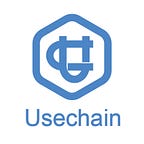What is blockchain? Here is the answer from Professor Cao | An interview by Mars Finance Part I
This is a remarkable interivew everyone should pay attenion with. Prfessor Cao, founder of Usechain, did an interview with Mars Finance, one of the top blockchain media in China recently, discussed about blockchain technology and its consensus algorithms.
Huining Cao:
Today our topic will be about blockchain and its consensus.
Is blockchain truly applicable? If so, in what area is it? And why is there no significant application of it except for cryptocurrencies?
First of all, what is blockchain?
Blockchain technology consists of two indispensable components:
A distributed ledger and tokens.
A blockchain without cryptocurrency, sought after by lots of people, is no more than just a database. Some people even seek for centralized tokens and largely deviate from the main idea of blockchain. Thus, those so-called consortium blockchains or private blockchains are simply nonsense — they are only to cater to the blockchain cult. Centralized tokens are another kind of regulatory arbitrage instead of real blockchain technology.
Distributed ledger, the first component of blockchain, utilizes advanced knowledge in Computer Science to build trust among strangers and potentially unreliable, malicious others. It asks every node to note down all transactions via broadcasting, and thereby makes the ledger basically not editable.
Also, the confirmation of transactions is theoretically decentralized, which means there is not a center organization or a minor group of people in charge of managing the ledger for others.
In such an inefficient manner, blockchain technology is considered just, reliable, and robust. It is even when 1/3 of the nodes are malicious.
The second component is token. It brings a natural incentive mechanism to transaction confirmations. With tokens, mining makes incentive on its own and hence the system requires no external financing. Meanwhile, the transactions of tokens generates fluidity and triggers positivity. And the information flows brought by the token price, most importantly, allow us to better integrate the scattered information all around the market.
Distributed ledger brings trust, and token brings incentive, fluidity, and information, all of which are indispensable.
To be continued …
Reach us at:
Website: http://www.usechain.net/
Weibo: https://weibo.com/usechain
Twitter: https://twitter.com/usechain
Facebook: https://www.facebook.com/UsechainFoundation/
Telegram: https://t.me/usechaingroup
Medium: https://medium.com/usechain/
Bitcointalk: https://bitcointalk.org/index.php?topic=3432061.0
Reddit: https://www.reddit.com/user/Usechain
